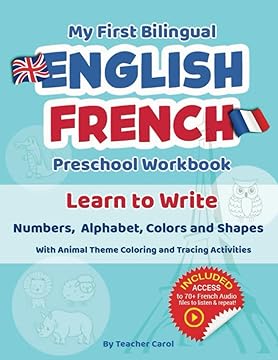Last Updated on July 4, 2024
Remember coloring and doodling as a kid? Those afternoons sprawled out with crayons weren’t just about fun and games. All that scribbling and coloring was actually a secret brain workout for your little mind! Those workbooks packed with letter tracing, number coloring, and shape exploring? They were low-key superpower builders, helping you develop all kinds of crucial skills without even realizing it.
Why are these colorful companions so beloved by parents and educators alike? Let’s peek inside their magical toolbox:
- ABC Adventures: Imagine your child, armed with colorful crayons, transforming squiggly lines into familiar letters. Each stroke isn’t just coloring, it’s forging a connection between visual cues and sounds, paving the path to reading and writing fluency.
- Numberland Explorations: Counting sheep used to be the only way to learn numbers, but not anymore! Vibrant workbooks bring numbers to life, making them objects to trace, color, and even add and subtract. Before you know it, your little mathematician will be whizzing through basic math concepts with newfound confidence.
- Shape Detectives: Circles hiding in the sun, squares peeking from windows – shapes are everywhere! Workbooks help your child become a shape sleuth, identifying and drawing these geometric friends. This boosts spatial awareness and hand-eye coordination, laying the groundwork for future artistic endeavors and even handwriting mastery.
- Fine Motor Fitness: Those tiny fingers working diligently to trace lines and curves? They’re getting a workout! Workbooks strengthen hand muscles and improve control, making writing and drawing a breeze. Think of it as a mini gym for those crucial motor skills.
But the benefits go beyond mere skill development. Coloring and tracing workbooks ignite a spark of creativity, allowing your children to express themselves through vibrant colors and playful patterns. They also nurture focus and patience, valuable qualities that translate into all areas of life.
Remember, every child learns at their own pace. The beauty of workbooks is their adaptability. Whether your little one is a preschool Picasso or a budding Einstein, there’s a workbook out there perfectly tailored to their interests and needs. Don’t be afraid to explore different themes, difficulty levels, and formats – find the one that makes their eyes light up with excitement!
And speaking of excitement, let me share a personal story: My nephew, Liam, always struggled with recognizing letters. Alphabet worksheets felt like a chore, not an adventure. Then, we stumbled upon a workbook filled with colorful animals, each one paired with a letter to trace. Suddenly, learning wasn’t a struggle, it was a safari! Liam roared with delight as he traced lions for L and giggled as he colored cuddly pandas for P. Within weeks, he was not only recognizing letters, but even stringing them together into simple words. The joy and pride in his eyes were pure magic.
Workbooks aren’t just tools, they’re gateways to a world of learning possibilities. So, unleash the inner artist, mathematician, and detective in your child with the magic of coloring and tracing. You might just be surprised at the developmental wonders that unfold!
P.S. Don’t forget to make it a shared adventure! Sit down together, color side-by-side, and narrate the stories hidden within the pages. You’ll be creating memories that last a lifetime, all while fostering a love for learning that will blossom far beyond the workbook’s final page.
The books shown below by Teacher Carol cover all these benefits, your child will thank you for it!
Frequently Asked Questions about Preschool Workbooks
What are the benefits of coloring and tracing workbooks for children?
Coloring and tracing workbooks offer a wide range of benefits for children’s development, including:
Fine motor skill development: Coloring and tracing activities help to strengthen the small muscles in the hands and fingers, which are essential for handwriting, drawing, and other fine motor skills.
Visual-motor coordination: Coloring and tracing activities require children to coordinate their eyes and hands, which helps to develop visual-motor coordination skills.
Visual perception skills: Coloring and tracing activities can help children to develop their visual perception skills, such as color recognition, shape identification, and spatial awareness.
Creativity and self-expression: Coloring and tracing activities provide a creative outlet for children to express themselves and explore their imagination.
Relaxation and stress relief: Coloring and tracing activities can be calming and relaxing for children, helping them to manage stress and anxiety.
What are some tips for using coloring and tracing workbooks with children?
Here are some tips for using coloring and tracing workbooks with children:
Choose age-appropriate workbooks: Workbooks should be challenging but not too difficult for the child’s age and skill level.
Provide a variety of colors and tools: Offer a variety of crayons, markers, colored pencils, and other coloring tools to encourage creativity and exploration.
Encourage creativity: Don’t worry about staying within the lines or coloring perfectly. Encourage children to express themselves freely through color and design.
Make it fun: Keep coloring and tracing activities fun and engaging. Take breaks, sing songs, and let the child’s interests guide the activity.
Praise their efforts: Praise the child’s efforts, not just the outcome. This will help them to develop positive self-esteem and a love of learning.
What if my child is not interested in coloring or tracing?
Don’t force the activity, find alternative creative outlets like painting, drawing, or playing with building blocks.
Is there anything else I should know about using coloring and tracing workbooks with my child?
It’s important to supervise young children while using workbooks to ensure they are using them safely and age-appropriately.
Provide a comfortable and well-lit environment for optimal engagement.
Let your child choose colors and explore their creativity without judgment.
Make it a positive experience with focused praise on effort and their enjoyment of the process.
About Education Topic
The Education category features articles and resources to help students and educators alike succeed, covering topics such as study techniques, career advice, and educational technology.









